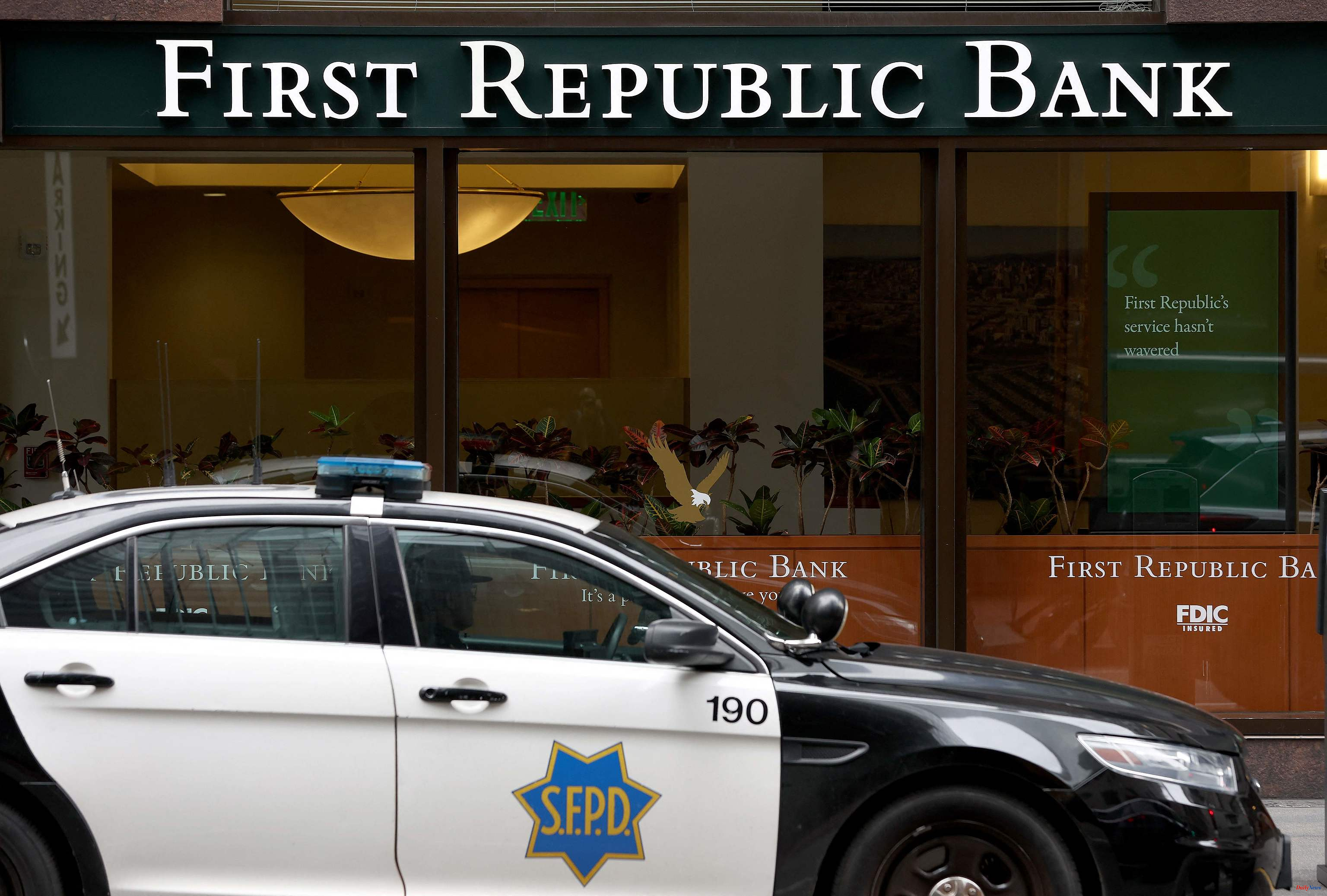All the big American banks have come to the rescue of First Republic Bank, the fourteenth largest entity in the country by assets, with more than 200,000 million dollars (188,000 million euros) on its balance sheet, whose share has suffered an 80% drop since it the crisis unleashed by SVB began. In total, the investment would be 30,000 million dollars (28,300 million euros), according to the Business Insider website.
The participation of a pool of banks in the purchase of First Republic follows one of the rules of the Joe Biden government in this financial crisis, which is to avoid using public money to rescue entities and, at the same time, seek solutions as quickly as possible possible to avoid contagion. The negotiations are being led by JP Morgan, the largest bank in the US, and the other three large financial supermarkets are also participating in them -that is, integrated banks, in the style of the Spanish BBVA or Santander-: Bank of America, Wells Fargo, and Citigroup.
Other entities involved are investment banking giants Morgan Stanley and Goldman Sachs, and US Bank and Bancorp. According to the US media, JP Morgan, Bank of America and Citigroup would each put up 5,000 million dollars; the rest would be provided by the other five banks. The news, revealed by The Wall Street Journal, caused a slight rise in the value of the share by 20%, although in a few minutes the titles lost half of that gain.
It is, in a sense, a return to the era of subprime mortgages. In 2008, JP Morgan bought, with the help of $19 billion from the Federal Reserve, investment banking giant Bear Stearns and the largest savings and loans (which could be comparable to Spanish savings banks), Washington Mutual. . Wells Fargo took over the commercial bank Wachovia, and Bank of America took over another investment bank, Merril Lynch.
On this occasion, it is not clear that the bailout banks are going to take control of First National, despite the fact that the current crisis of the entity was unleashed when its management confirmed that it was looking for ways to consolidate its financial position, including the sale of the company The option that, for the moment, seems most likely is that the 30,000 million are used to increase the capital of the bank, currently devastated after the collapse of the price, but with a structure that allows borrowing entities to undo their positions and exit First National as soon as possible. In any case, the negotiations are ongoing and, until an agreement is announced, everything will be speculation.
The First Bank case reveals how it is virtually impossible for regulators not to end up creating winners and losers with their interventions to stabilize the market. The San Francisco-based bank is in a difficult situation because the special funding window created by the Federal Reserve on Sunday to help troubled banks - and which is, in all but name, a mechanism of bailing them out - it is not designed in a way that is favorable to your portfolio.
This window, which is officially called the Bank Term Financing Program (BTFP), offers financing to banks in exchange for them placing mortgage, Treasury, and agency bonds as collateral. That suits Silicon Valley Bank (SVB) like a glove, since 53% of its portfolio is made up of these assets. Other large regional banks, such as Key Bank, Truist Bank, Zions Bank, and Comerica can also benefit greatly from the BTFP. But that is not the case of First Bank, which only has 3% of its portfolio in these assets.
That poses a major problem. In the case of SVB, which was intervened on Friday, it seems that the objective of the authorities is to make the entity resort to the BTFP and get rid of its devalued securities - which, moreover, will be accepted by the Federal Reserve at the price at which the bought, that is, above its current value - and in exchange obtain liquidity to meet the commitments of its clients and creditors. That will make your purchase by a rival that much more attractive. But First Bank, due to the very structure of its portfolio, cannot count on that lifeline.
First Bank also has a loan to deposit ratio of 111%. That is to say: it has granted more loans than it has in deposits, which feeds the selling pressure. With its debt, it has been reduced to junk bond category by two of the three most relevant rating agencies -S
According to the criteria of The Trust Project












